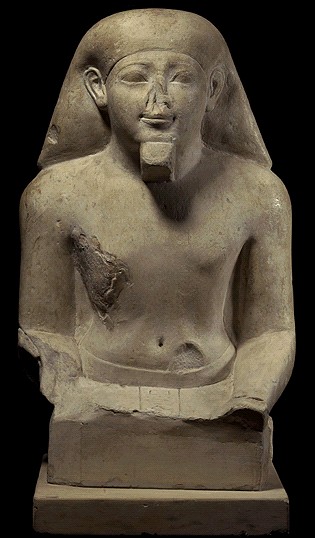|

|
UPPER
PART OF THE STATUE OF A MAN
Limestone
Mid 18th Dynasty, about 1500 BC
|
|
|
The name of the owner
of this statue is regrettably not preserved, as only the very beginning
of an inscription has survived. This text would in full have expressed
a wish for offerings to be left for the owner, perhaps in a temple.
It shows a man seated with (originally) both his hands placed on
his lap. The style of the statue with its long simple wig, short
formal beard, and faint confident smile is typical of the middle
of the 18th Dynasty, perhaps of the reign of Thutmose III or thereabouts.
Note the so-called 'negative space' between the upper arms and the
body, as the arms and legs of Egyptian statues in stone are rarely
separated from the main block which forms the body of the object.
Although statues such as this were usually brightly painted, there
are no traces of color surviving. |
|
NEXT IMAGE
| Slide Show Index

All images reproduced by permission
of the Trustees of the British Museum. Informational text provided by
the British Museum.
The History Place Terms
of Use: Private home/school non-commercial, non-Internet re-usage only
is allowed of any text, graphics, photos, audio clips, other electronic
files or materials from The History Place™
|
|

